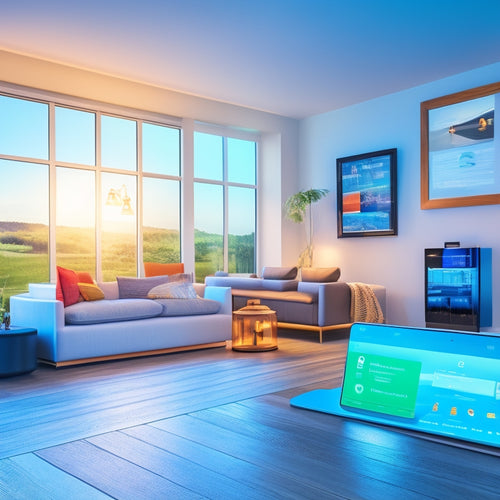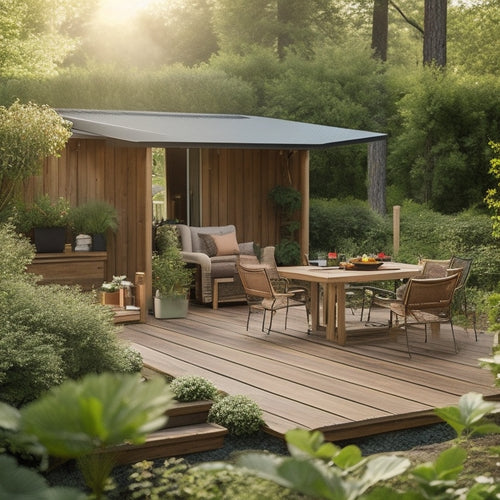
Why Do Solar Panel Installations Take So Long?
Share
You're likely wondering why your solar panel installation is taking longer than expected, and it's not uncommon: a combination of permitting and inspection delays, site assessment and design challenges, material supply chain issues, installation subtleties, and local building code compliance requirements often conspire to stretch out the process. From awaiting approval from local authorities to evaluating your roof's condition and ensuring compliance with safety standards, multiple factors can slow down the installation timeline. As you maneuver through this intricate process, understanding the details involved will help you better plan and prepare for a successful solar panel installation - and there's more to investigate that can help you get there.
Key Takeaways
- Delays in permitting and inspection, influenced by zoning regulations and compliance, can extend project timelines.
- Site assessment and design complexity, including evaluating local climate conditions and roof size, can add time to the project.
- Material supply chain issues, such as manufacturing bottlenecks and transportation disruptions, can impact project timelines and budgets.
- Installation complexity factors, including roof type and condition, system size, and installation team experience, can slow down the process.
- Compliance with local building codes and safety standards, including obtaining necessary permits, is time-consuming and mandatory.
Permitting and Inspection Delays
Most solar panel installations face delays during the permitting and inspection process, with nearly 80% of projects experiencing some form of setback.
You'll likely encounter permitting processes that involve submitting plans and waiting for approval from local authorities, which can be influenced by zoning regulations and compliance with local and national regulations.
Land leasing or purchasing, soil testing, and site surveys can also impact project timelines. This can take several weeks to a few months, depending on the jurisdiction.
Additionally, inspection requirements will need to be fulfilled, which can add more time to the project timeline. You'll need to ascertain that your installation meets local building codes and safety standards, which may require multiple inspections.
These obstacles can slow down your solar panel installation, but being aware of them can help you plan ahead and minimize delays.
Site Assessment and Design
With your solar panel installation project cleared to proceed after overcoming permitting and inspection obstacles, you'll next begin an essential phase: site evaluation and design. This phase is significant in guaranteeing your solar panel system is maximized for maximum solar efficiency.
During this phase, a professional will evaluate your property to determine the ideal system size and configuration. This involves analyzing your energy usage and demands to determine the required system sizing. A thorough site evaluation is necessary to identify potential obstacles affecting solar panel performance, such as shading analysis, and to maximize energy output.
Additionally, the evaluation should consider local climate conditions to determine solar energy potential. It also involves evaluating your roof's size, orientation, and condition to verify it can support the solar panels.
Identifying potential shading issues from trees, buildings, or other obstructions is also significant. Determining the best panel placement and wiring layout for maximum energy production is another essential step.
A thorough site evaluation and design are essential to guarantee your solar panel system meets your energy needs and provides the desired level of independence from the grid.
Material Supply Chain Issues
As you move forward with your solar panel installation project, one vital aspect to evaluate is the availability of necessary materials, which can greatly impact the project's timeline and budget.
Material supply chain issues can considerably delay your project. It's essential to take into account the importance of regular maintenance to guarantee peak performance and energy efficiency, as well as the benefits of a hybrid approach to optimize energy usage.
Manufacturing bottlenecks, for instance, can lead to a shortage of solar panels, inverters, or other key components. Transportation disruptions, such as trucking shortages or port congestion, can also cause delays in material delivery.
You should factor in these potential setbacks when planning your project timeline. It's important to work with a reputable supplier that can provide a stable and reliable supply chain to minimize these risks.
Installation Complexity Factors
Several factors contribute to the complexity of your solar panel installation, greatly impacting the project's duration and cost.
You might think that installing solar panels is a straightforward process, but it's not always the case.
Here are some complexity factors to take into account:
-
Roof type and condition: If you have a complex roof design or an older roof that requires additional repairs, it can add time to the installation process.
-
System size and design: Larger systems or those with custom designs require more planning, materials, and labor, increasing the installation time.
-
Installation team experience: An experienced installation team can work more efficiently, but if the team lacks experience, it can slow down the process.
- Project management efficiency: Poor project management can lead to delays, miscommunication, and rework, adding to the overall installation time.
These factors can greatly influence the duration and cost of your solar panel installation.
Local Building Code Compliance
How do local building codes impact your solar panel installation project?
Local building codes and ordinances can greatly influence the duration of your solar panel installation. You'll need to comply with zoning regulations, which dictate how close your solar panels can be to property lines, and safety standards, such as electrical and fire codes.
For instance, verifying your solar panel system meets renewable energy standards can help reduce your fleet's carbon footprint and contribute to environmental sustainability.
Additionally, choosing budget-friendly solar panel options, like thin-film or polycrystalline panels, can also impact the installation timeline.
Failure to comply can result in costly rework or even project cancellation. Your installer will need to research and obtain necessary permits, conduct inspections, and confirm your system meets local requirements.
This process can add weeks or even months to your project timeline. Be prepared to invest time and resources in maneuvering local regulations to guarantee a successful and code-compliant installation.
Frequently Asked Questions
Can I Install Solar Panels Myself to Save Time and Money?
You can attempt a DIY solar installation, but be aware that it's a complex process requiring precise electrical and roofing work, and overcoming installation challenges like permitting, wiring, and mounting can be intimidating, eating into your time and savings.
How Long Does It Take to See Savings on My Energy Bill?
You'll start seeing energy savings on your bill within a few months, but your exact timeline depends on factors affecting savings, such as system size, usage, and local utility rates, which determine the speed of your return on investment.
Can Solar Panels Be Installed on a Metal or Clay Roof?
You can install solar panels on both metal and clay roofs, but you'll need to evaluate metal roof's structural integrity and potential rust, while ensuring clay roof's tiles are compatible with the panel's mounting system and waterproofing.
Will Solar Panels Void My Roof's Warranty?
You're wise to evaluate the roof warranty implications before installing solar panels. Typically, you won't void your roof's warranty, but the installation impact can affect it, so it's essential to review your warranty terms and consult with your roofing and solar providers.
Can I Add More Panels to My Existing Solar Panel System?
As you ride your time-traveling DeLorean into a sustainable future, you're wondering if you can add more panels to your existing solar panel system; yes, you can, but guarantee adding capacity is compatible with your original panel setup to avoid a mismatched matrix.
Related Posts
-

10 Best WiFi Outlets for Tracking Home Energy Usage
You can optimize your home's energy usage with the right WiFi outlets, which provide real-time monitoring and control...
-

Why Vertical Gardens Reduce Home Energy Consumption
By incorporating a vertical garden into your home design, you'll reduce energy consumption through natural insulation...
-

Green Deck Options: Earth-Conscious Choices for Your Home
You're looking for a deck that not only enhances your home's exterior but also aligns with your eco-friendly values. ...


